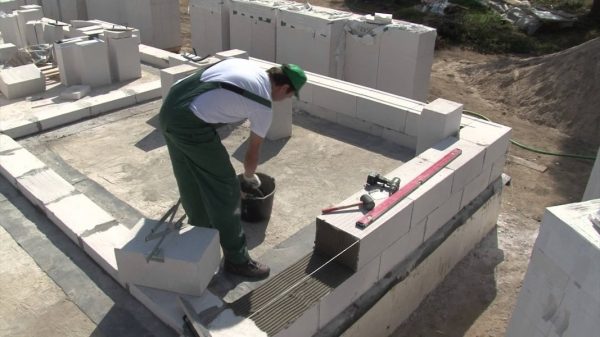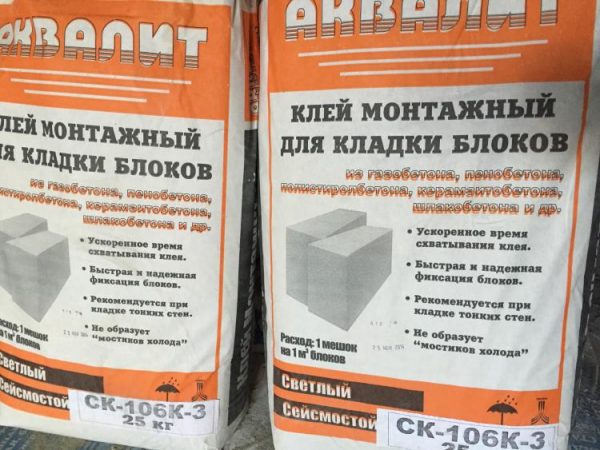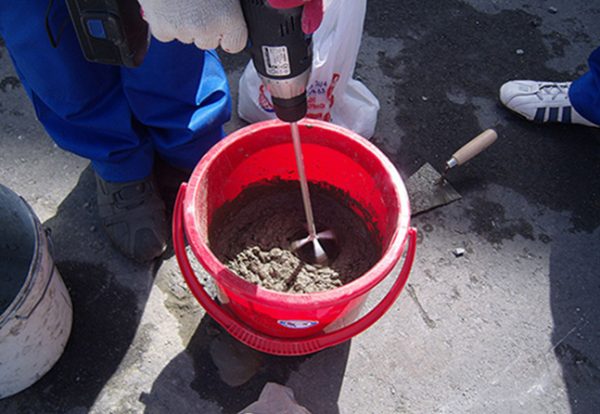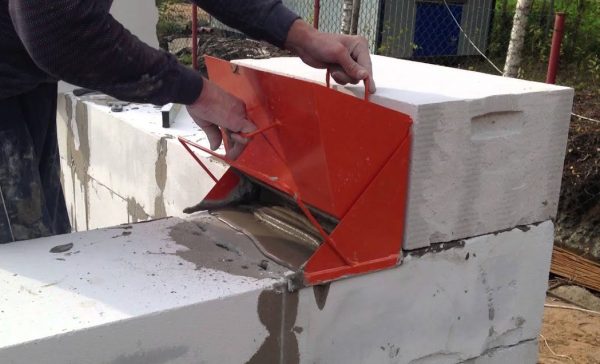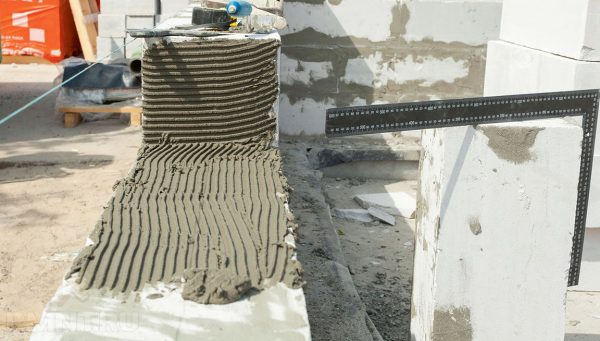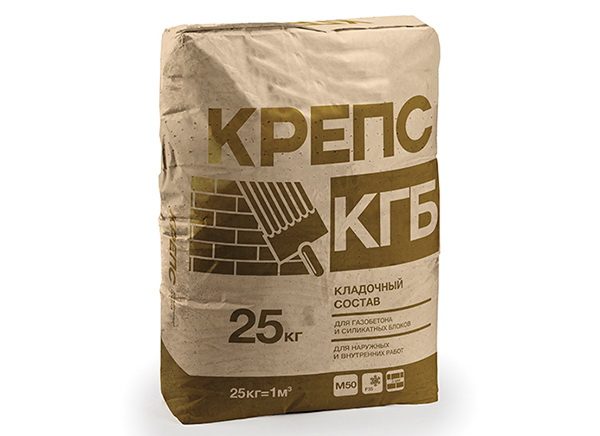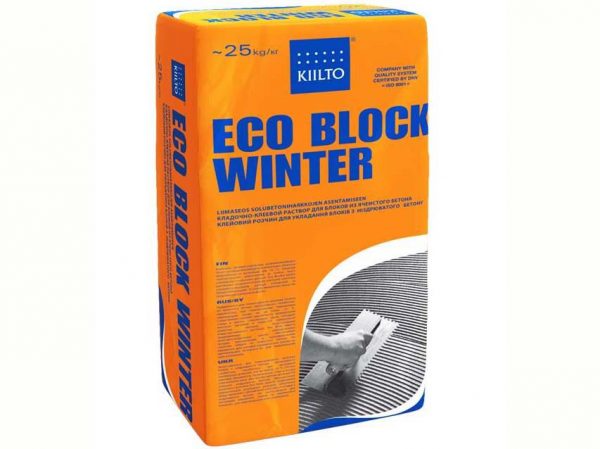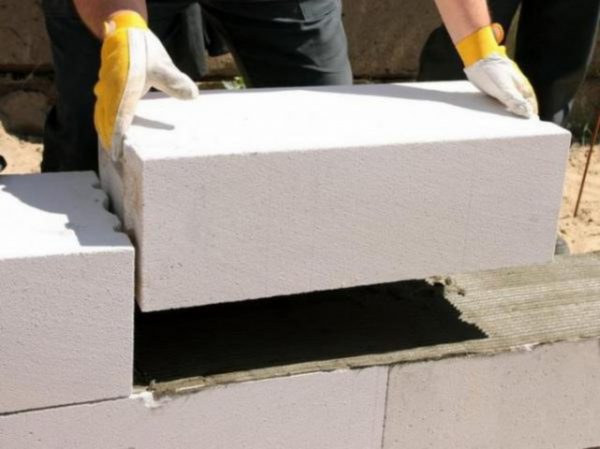The use of aerated concrete blocks in modern construction has become widespread. However, classic mortars are not suitable for their laying, and it is necessary to use special glue for aerated concrete blocks.
- Glue mixtures and their advantages
- Components
- Selection options
- Glue consumption per 1 m3
- Preparation of aerated concrete mortar
- Tool for applying glue to aerated concrete
- How to lay aerated concrete blocks - step by step instructions
- The specifics of work in winter
- Types of adhesive for aerated concrete
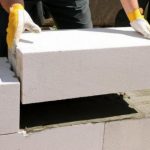
Mixtures of this category on the market are represented by a wide range. In this regard, it is necessary to be able not only to choose the right mixture, but also to use it wisely. Consider these issues in more detail.
Glue mixtures and their advantages
Glue for aerated concrete has several advantages compared to conventional sand mixtures. When using it, the humidity of aerated concrete blocks does not increase. Hardening occurs without shrinkage, and the adhesive mixture can be used as a putty.
The only point that you should pay attention to when laying masonry is setting time. Glue hardening for gas blocks occurs within 10-15 minutes. For this reason, you must be careful when working and maintain the necessary speed.
In addition, glue for gas concrete has several more advantages:
- due to the more complex composition and additives on a polymer basis, masonry can be done at sub-zero temperatures;
- no complicated preliminary work is required in preparing the mixture;
- constant glue composition, which gives the same setting and the possibility of using thinner joints;
- mortar consumption is four times lower than sand mixture;
- due to the possibility of using thinner seams, the overall level of heat loss is reduced.
Components
In its composition and the presence of various components, adhesives for aerated concrete are quite diverse. There are also special brands with various additives that allow you to work at low temperatures. All mixtures for gas silicate blocks basically have the following components:
- fine sand;
- high quality cement;
- modifiers that prevent cracking during temperature changes;
- polymer-based additives that reduce thermal conductivity and allow the adhesive composition to not freeze at temperatures up to minus 10 degrees.
The frost-resistant adhesive used for masonry in the winter period, has in its composition additional components that increase resistance to low temperature.
to contents ↑Selection options
On the market there is a wide selection of adhesive compositions designed for laying a gas block. When choosing a particular brand, first of all, it is worth considering the conditions under which the masonry will be performed.
Obviously, for work at low temperatures, frost-resistant mixtures should be purchased. The temperature range for which the adhesive is designed is indicated on the package. An equally important parameter to which you pay attention when choosing is the setting speed.
Let's not forget that most mixtures begin to set in 10 minutes, and complete hardening occurs within 2 hours. Depending on the brand, these parameters may vary, but the average indicators are just that. If you do not have good skills in laying gas blocks, it is better to purchase glue with a longer curing time.
to contents ↑Glue consumption per 1 m3
The flow rate of the mortar for laying one cubic meter of cellular blocks depends on several indicators. To make a more accurate calculation, you can use a special calculator that is on many sites on the construction topic. Also, the flow rate per 1 m3 is carried out according to the formula: S = [(L + H) / L x H] x B x 1.4, where:
| Variable name | Variable value |
|---|---|
| S | total flow rate |
| L | block length |
| H | block height |
| B | joint thickness |
| 1.4 | dry glue consumption rate per 1 m2 with a seam of 1 mm |
Also, a solution for laying aerated concrete can be consumed up or down, depending on the following factors:
- block surface quality;
- climatic conditions under which masonry is carried out;
- tools used during work;
- the presence of reinforcement.
To a large extent, the working level of the worker also affects the flow rate of the solution.
to contents ↑
Preparation of aerated concrete mortar
The technology for preparing the adhesive solution with your own hands is quite simple. Water is poured into the cooking tank in the required volume and gradually, with constant stirring, the mixture is poured in a dry form. The necessary proportions can be found on the packaging.
Mixing the solution can be done manually, but the most convenient option is to use a special nozzle for a drill. It is necessary to achieve complete mass uniformity. Next, the finished solution is allowed to stand for about 10 minutes and mixed again.
Kneading must be done in small portions, since the glue sets quickly enough. During operation, the mass is periodically mixed, while adding water to the finished solution is strictly prohibited. The finished solution begins to be applied to the second row, since the sand mixture is laid on the first to achieve initial leveling.
to contents ↑Tool for applying glue to aerated concrete
As a toolbox used for laying aerated concrete blocks, it uses quite a few simple devices. The main ones are:
- trowel;
- notched trowel;
- toothed bucket;
- carriage.
About the carriage should be said in more detail. It refers to professional tools, and the acquisition of this device is justified in the presence of large and constant volumes of work. The carriage allows you to withstand a constant thickness of the seam and simplifies the application of glue due to a special container.
to contents ↑How to lay aerated concrete blocks - step by step instructions
Wall masonry from aerated concrete blocks is somewhat different from the work carried out using sand mortars. The main rule that is observed during the work is the application of the adhesive only on the carefully prepared surface of the block. It should not have dust, ice and other foreign substances. The main stages of work consist of the following steps:
- inspection and cleaning of blocks;
- adhesive preparation;
- applying the solution to the blocks;
- installation of blocks and their alignment;
- cleaning masonry from excess glue.
It should be noted that preliminary wetting of aerated concrete blocks during work is not required. However, in the case of hot weather, it may be required to slow down and stabilize the solidification of the solution. It is advisable to cover the finished masonry with a tarp or burlap until the glue is completely set.
to contents ↑The specifics of work in winter
Work on the construction of walls in most cases does not stop with the end of a warm period of time. Glue compositions for foam blocks allow laying even in winter due to special silicate and polymer additives.
to contents ↑Even when using glue with frost-resistant components, it is worth observing certain rules. The solution must be kept warm during operation, and its temperature must not fall below zero degrees. The entire prepared glue solution is used for 30 minutes, and it is better to insulate the container in which it is located.
Types of adhesive for aerated concrete
Glue mixtures for laying aerated concrete are divided into two main categories:
- summer mixes;
- winter mixes.
By laying on the summer mixture, you can achieve a higher aesthetics of the final work. The basis of the composition of such mixtures is white cement, and the seams are obtained in the same shade with the blocks themselves. As a result, in non-residential premises you can neglect the interior decoration.
The most common brands of summer glue budget segment are:
- “Mix Master”;
- “Founds T-112”;
- "Craps."
Work with these mixtures can begin at temperatures from plus 5-7 degrees Celsius.
Winter glue for foam blocks is more plastic, however, its price is slightly higher than that of summer modifications. It should be borne in mind that the lower temperature limit at which all the technical parameters of the solution are fixed is in the region of minus 10-12 degrees Celsius.
Due to its plasticity, winter glue is more tenacious during work. The time of its final setting can reach several hours, which allows you to carry out work in a more relaxed mode.
Outwardly, the winter compounds are gray, which will require additional decoration. When using them, it is worth considering a higher flow rate of 1 m3. The increase can reach 25-30% compared with summer glue. Budget options include:
- KIILTO Eco Block Winter;
- BERGhome;
- Block
In conclusion, we note that no matter what glue you use, always carefully read the instructions and do not violate the masonry technology.

